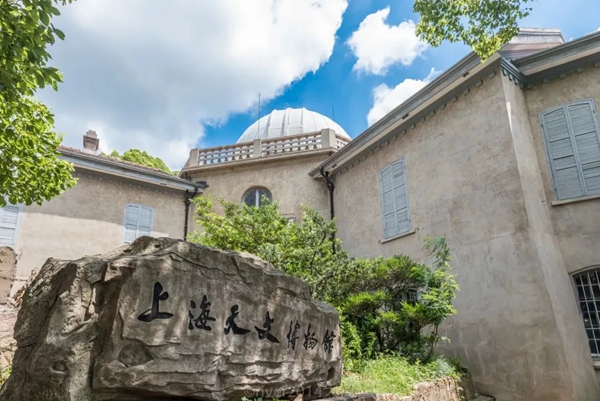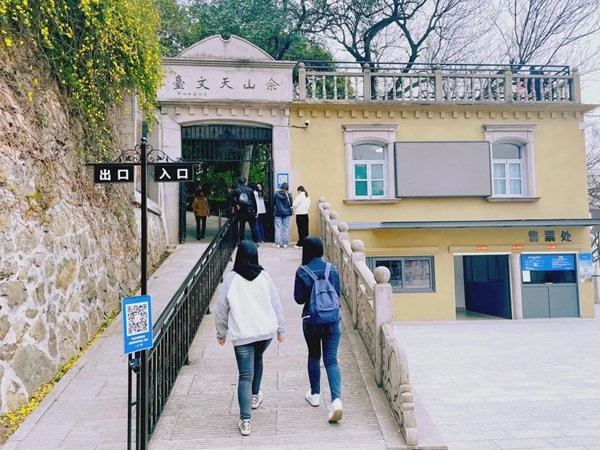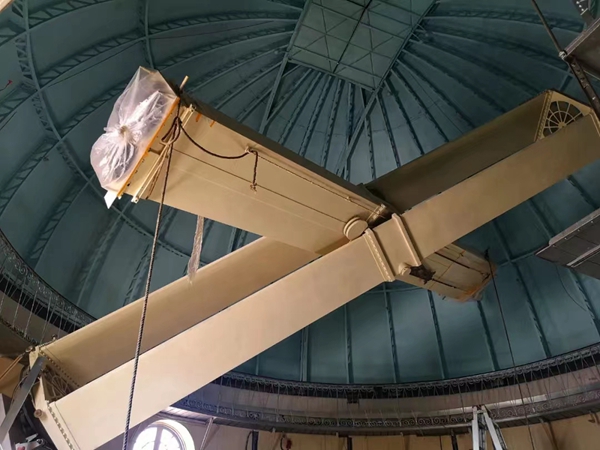
A view of the Shanghai Astronomical Museum in spring. [Photo/WeChat ID: sheshanlvyou]
The Shanghai Astronomical Museum, which is home to China's first large astronomical telescope, is located atop Sheshan Mountain in Shanghai's Songjiang district. Its predecessor is the Sheshan Observatory, which was erected for the telescope in 1900.
The Sheshan Observatory is China's first astronomical observatory dedicated solely to astronomical observation. As a result, it has witnessed China's modern astronomical development.
It is China's first modern observatory with a planetarium dome, a large astronomical telescope and is one of the country's most important birthplaces of modern astronomy. The observatory has played an important role in advancing the world's understanding about astronomy.
The Shanghai Astronomical Museum was founded in 2004 by the Chinese Academy of Sciences' Shanghai Astronomical Observatory. In 2021, the museum began an overhaul which dramatically improved the overall experience and it has reopened on March 20 after the two-year overhaul.
One of the key highlights of the museum's collections is a binocular telescope with 40-centimeter refracting lenses. Built in 1900, it is China's first large astronomical telescope and remains one of the country's largest refracting telescopes.
After the overhaul, the telescope has restored its observational capabilities and space enthusiasts now have the opportunity to look at the vast sky with this century-old piece of equipment.
The Shanghai Astronomical Museum has a century-old astronomical library that has resources of China's astronomy history, thousands of astronomical negatives, and precious historical artifacts, such as the Palan meridian instrument.
It has both historical exhibition and scientific education functions. The museum is a national base for astronomy education and an important cultural relics preservation unit.
Its Centennial Observatory exhibition area shows the development of modern astronomy in China with rich cultural relics and historical materials. Its Focusing Telescope exhibition area showcases the development of astronomy since the invention of the astronomical telescope 400 years ago. Its Astron Classroom is equipped with multimedia equipment to carry out various popular science reports, salons, and academic exchange activities.
The museum's "Time and Man" section mainly displays the basic concept of time and its relation with man's social activities, as well as China's research achievements. Its Sino-Foreign Astronomical Exchange section includes an astronomical exchange, time determination by the meridian circle, the evolution of telescopes, a century-old telescope, astronomical books and other display areas. Numerous cultural relics and historical materials there narrate the modern history of astronomy in Shanghai and in China.
In addition to the historical exhibition, the museum also has a unique Starry Sky Tour interactive dome-screen cinema where visitors can explore the mysteries of the universe.
There is also a solar observation center and a public observatory equipped with a 35-cm astronomical telescope that can present real-time images of the sun during the day, as well as allow visitors to zoom in on the moon and other planets at night.
As the main base for the Shanghai Astronomical Observatory to carry out science popularization, the museum often organizes various astronomical science popularization activities, including astronomical observation activities when important astronomical phenomena occur.
With the support of the Shanghai Astronomical Observatory and the Shanghai Astronomical Society, the museum has planned a special astronomical science popularization lecture series, inviting astronomy experts every month to interpret hot astronomical issues and make predictions for future month's astronomical observations. The lecture series has become a brand project of the museum's popular science publicity activities.
In addition, the museum often conducts astronomical science lectures, exhibitions and other activities at primary and secondary schools, and in communities to satisfy the desires of the general public to explore the scientific world.
It also attaches great importance to online astronomy popularization, and is responsible for the maintenance of the Astron China Astronomy Popularization Website, which is the popular science portal of the Astronomy Popularization Alliance of the Chinese Academy of Sciences.

The Shanghai Astronomical Museum attracts visitors after completing its two-year overhaul. [Photo/WeChat ID: sh_songjiang]

A close-up view of the century-old binocular telescope. [Photo/WeChat ID: SHAM-SHAO]


